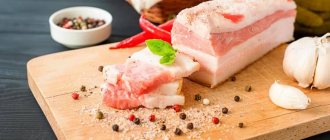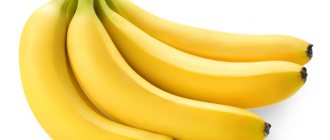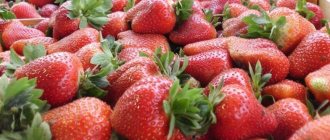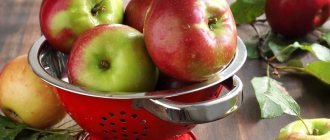Blueberries improve the functioning of the gastrointestinal tract, slow down aging and support eye health. It also relieves stress, which is important during a diet. Find out the calorie content of blueberries and include them in your diet for health benefits!
- Links to authoritative sources
Author: Kristina Lobanovskaya, doctor, practicing nutritionist Article updated: 12/27/2019
Ask a Question
Blueberries are a perennial low-growing subshrub and the spherical fruits growing on it are dark purple in color with a waxy silver coating. Blueberries are very juicy, have virtually no aroma, but have a delicate taste with pronounced sourness. Despite the presence of many useful and even unique properties, the calorie content of blueberries is on average 50 kcal per 100 grams. Therefore, it is highly valued not only in folk medicine, but also in official medicine, and is also widely used in dietetics to provide the body with the necessary vitamins during weight loss.
Minus 8 kg in 14 days
Menu from a nutritionist-nutritionist
Get
Get
Where and how blueberries grow
Blueberries grow only in the northern hemisphere of the Earth. Very rarely it can be found in the temperate zone, where there are dense forests. For normal growth and full fruiting, blueberries need a lot of shade and moisture. That is why blueberry bushes are most often found in dense coniferous forests or in swamps. They can be seen less often in areas with mixed plantings. All this makes it much more difficult to grow blueberries at home, since you will have to create suitable conditions for them.
Among the places where blueberries grow, the following can be distinguished:
- Northern Europe;
- Asia;
- North America;
- Russia (Ural, Siberia).
Blueberries are very demanding of the soil and therefore they are not so often found in forests with unsuitable soil. The bushes grow well in soil with a high level of acidity. Sandy soils that contain a lot of humus are also ideal for the growth and fruiting of shrubs. When grown under such conditions, the areola of the berries can be quite large. Sometimes there are places where blueberries grow over several tens of kilometers.
Types of blueberries
There are five main types of blueberries, which are most often found in the wild and grown at home.
Hairy
Sakhalin is considered the birthplace of this berry. Hairy blueberry grows in marshy areas. It grows much less frequently in deciduous and coniferous forests.
Hairy blueberry is a tall plant, as its bush grows up to one meter. In spring, leaves with elongated leaf blades appear on the shrub. In September, the color of the foliage changes, the leaves become scarlet. In mid-summer the first berries are formed. They have a spherical shape, the diameter is 5-6 millimeters.
Caucasian
This is the oldest type of blueberry, which, according to scientists, appeared during the last ice age. Now the berry is found in the northern part of the Caucasus and in Bulgaria. Sometimes Caucasian-type shrubs can be seen in Iraq and Asian countries.
The Bulgarian berry differs from other varieties of blueberries in its tallness. In suitable conditions, the shrub grows up to two and a half meters. Large green oval-shaped foliage forms on the stems in April-May. Fruit formation begins at the end of June. Caucasian blueberries do not tolerate frost and therefore dry out even with slight frosts.
Pennsylvania
Pennsylvania blueberries grow only in North America. However, if you wish, you can plant it on your summer cottage. Pennsylvania shrub grows up to 50-55 centimeters. The plant is not afraid of temperature changes and tolerates frost normally.
Oval-leaved
Oval-leaved blueberries are most commonly found in the Aleutian Islands and China. The distinctive features of the oval-leaved blueberry include its tall four-meter bushes and slow growth. The shrub does not tolerate frost and drought.
paniculate
This is the shortest blueberry, the height of which rarely exceeds twenty centimeters. The plant is practically never found in Europe, since its homeland is North America. Summer residents rarely grow panicle-shaped blueberries, since they bear fruit not every year, but once every 2-3 years.
Application
Blueberries are harvested for consumption raw, dried, frozen and processed. It is used to make jam, jelly, compote, fruit drink, jelly, jam, juice, liqueur. The berries are ground with sugar, used as a filling for pies, and added to desserts, fruit salads and dairy products. Dried blueberries are included in many medicinal teas that are used for various diseases.
Market Analytics
- COVID-19 is changing the rules of the game in the cosmetics market
- Beauty of the future: cosmetic innovations 2020
- New ingredients are the driving force of the cosmetics industry
Convenient search for beauty salons on our website
Beauty salons in Moscow Beauty salons in St. Petersburg Beauty salons in Ekaterinburg Beauty salons in Novosibirsk
Latest blog posts on our website
- Naturecream / Wrinkles Puppets
- Naturecream / PEPHA-TIGHT - instant skin lifting
- Naturecream / Blue light - a danger to the skin
- Naturecream / Cocoa Butter – A treat for the skin
- Naturecream / Trylagen - supports the entire collagen life cycle.
- Naturecream / Spring skin rehabilitation
- Naturecream / Cleavage - a woman's passport
- Naturecream / Anti-cellulite “Memo”
- Naturecream / Peptides instead of beauty injections.
- Naturecream / Microplastics in cosmetics
Latest forum topics on our website
- Mrs._Smith / Badly sunburned! What to do?((
- Ice / Is it necessary to combine fitness classes with a diet?
- Antonova / What can be used for hair loss?
- Radio operatorKat / Who was on a protein diet?
- Suzanna / Mesotherapy on the face
Other articles in this section
| Pomegranate Pomegranate has large spherical fruits, with a diameter of 8 to 18 cm. Inside the fruit, small oblong grains are located in rows. The grain consists of a hard white pit surrounded by sweet and sour, slightly tart juicy pulp, the color of which varies from pink to ruby. The peel is hard, rough to the touch, its color varies from yellowish-orange to dark red. In folk medicine, all parts of the pomegranate are used: seeds, internal white membranes and peel. |
| Lingonberry Lingonberry is a low-growing evergreen shrub and rarely reaches a height of more than 30 cm. Lingonberry grows in coniferous and mixed forests, on hills and dried peat bogs in the northern regions of Russia. At the beginning of summer, small white-pink flowers with a faint, pleasant scent bloom in dense clusters at the tops of the branches. By the beginning of autumn, the fruits ripen - bright red spherical shiny berries with a large number of seeds. Lingonberries grow in clusters of 2 to 9 pieces and have a piquant taste with a slight bitterness. |
| Blackberry Blackberry is the closest relative of the raspberry and belongs to the Rosaceae family. Blackberry bushes are the most common in nature; they are rarely grown in gardens. The plant blooms in early summer and blooms until autumn, so one bush simultaneously contains flowers, unripe fruits and ripe berries. Blackberries are multi-seeded berries of purple-black color, juicy, sweet and sour with a wonderful aroma. Blackberries are a very productive plant, and at the height of the summer season, its branches bend under the weight of ripe berries. |
| Cherry Cherry fruits are small drupes up to 2 cm in diameter, oval or heart-shaped. They have sweet, juicy, fleshy flesh and a small round seed. The color of cherries depends on the variety and can be yellow, red, pink and almost black. Dark cherries contain many carotenoids and anthocyanins. |
| Marang Marang is adjacent to such fruits as cempedak, jackfruit, durian and has a similar structure and chemical composition of the pulp. Marang fruits are oval-shaped, greenish-yellow in color and small in size. When ripe, the fruit weighs about 1 kg and reaches an average of 20 cm in length. Their thick skin is studded with soft spines that harden as the fruit ripens. The white and tender pulp of ripe marang contains large seeds, it is very tasty and exudes a pleasant aroma. Marang is grown mainly for local consumption and is practically not exported to other countries due to its limited shelf life. Fruits picked green will not ripen and will rot. |
| Grapes Grapes are a climbing woody vine that has a powerful root system and consists of long perennial shoots. It is attached to the support with antennae. Grapes are considered one of the first plants that people began to consciously grow and thanks to which they began to lead a sedentary lifestyle. The fruit of the grape is a round or oblong berry with juicy, refreshing pulp and may contain small hard seeds. Depending on the variety, grape berries differ in shape, color, size and taste, which can vary from sour to sickly sweet. The color of the fruit comes in various shades of yellow, green, pink, burgundy, blue, purple, and black. The berries are collected in loose or dense clusters, which have different shapes and weights. |
| Feijoa Ripe fruits are dark green in color, soft to the touch, with an inexpressible mixture of strawberry, kiwi, pineapple and strawberry aromas. The peel of feijoa is dense and slightly tart in taste, the pulp is juicy, tender, sweet and sour, and contains seeds. The berries grow small in size and weigh approximately 50-100 g. Feijoa fruits are eaten whole, but they are collected unripe, and they ripen during storage. Despite the fact that feijoa is native to South America, this fruit has perfectly adapted to the local climate and bears fruit well in the Crimea and Transcaucasia. |
| Jackfruit Jackfruit (Indian breadfruit) is a tropical plant with large fruits weighing more than 3 kg. Of all the edible fruits growing on trees, they are the largest and some specimens reach 40 kg. The fruits are covered with a thick skin strewn with cone-shaped protrusions, under which there is a sweet and aromatic flesh of a rich yellow color. It consists of large soft lobes separated by fibrous veins. Inside each lobe there is a large, oblong-shaped seed. |
| Raspberry Lush raspberry bushes reach a height of 1.5 m and can form impenetrable thickets. The fruits are small hairy false berries, which are an overgrown receptacle, very juicy, tender and aromatic, sweet and sour in taste. As a rule, the berries are red, but yellow and black varieties have been developed. There are garden and wild raspberries, which contain a higher content of nutrients. But garden raspberries are much larger. Raspberries ripen at different times, so one bush contains flowers, unripe fruits and ripe berries at the same time. Mass berry picking in central Russia usually occurs in August. |
| Hawthorn Hawthorn is widespread and can be found in the undergrowth, ravines, along river banks, and on the edges of forests. Hawthorn blooms in early summer, and the fruits ripen by autumn. Hawthorn berries are about 1 cm in diameter, round or oval, hard, wrinkled. The color of the fruit is yellow, orange, dark red, brown, sometimes with a whitish coating. There is no smell, the pulp is mealy, sweet and sour with hard seeds. Hawthorn is a medicinal plant and all its parts are used in folk medicine: fruits, leaves, bark and flowers. |
Blueberry composition
Blueberries differ from many other berries in their unique and rich vitamin and mineral composition. Ripe blueberries contain chromium, phosphorus, manganese, iron and calcium. The fruits are also rich in vitamins of groups PP, A, B, C.
Blueberries are considered to be the record holder for the content of cancer protectors. These microelements protect the human body from the appearance of neoplasms. Anthocyanins, which are also found in ripe berries, promote vasodilation in people with hypertension.
100 blueberries contain a huge amount of nutrients and low fat content. Thanks to this composition, people who want to lose weight often include berries in their diet.
100 grams of blueberries contain:
- proteins: 1.1 g;
- fats: 0.6 g;
- carbohydrates: 7.6 g;
- dietary fiber: 3.1 g;
- organic acids: 1.2 g;
- water: 86 g;
- mono- and disaccharides: 7.6 g;
- ash: 0.4 gr.
Macronutrients:
- calcium: 16 mg;
- magnesium: 6 mg;
- sodium: 6 mg;
- potassium: 51 mg;
- phosphorus: 13 mg.
Vitamins:
- vitamin B1 (thiamine): 0.01 mg;
- vitamin B2 (riboflavin): 0.02 mg;
- vitamin C: 10 mg;
- vitamin E (TE): 1.4 mg;
- vitamin PP: 0.4 mg.
Microelements:
- iron: 0.7 mg.
What vitamins are in the berry?
Blueberries are rich in vitamins and minerals. The table shows the content of vitamins in 100 g of fresh berries and the percentage of daily value in 100 g of product (in mcg).
| Vitamin | Content, 100 g/mcg | Percent Daily Value of 100 g/mcg |
| A | 6 | 6 |
| B1 | 15 | 1 |
| B2 | 15 | 1 |
| PP | 300 | 1,5 |
| B6 | 100 | 5 |
| B9 | 3 | 1,5 |
| C | 10000 | 15 |
| E | 1900 | 20 |
The following table shows the mineral composition and percentage of the daily value of minerals per 100 g of product.
| Mineral substance | Content, mg/100 g | Percent Daily Value per 100 g |
| Calcium | 15 | 2 |
| Iron | 3 | 30 |
| Magnesium | 4 | 1 |
| Sodium | 4 | 0,3 |
| Phosphorus | 60 | 5 |
| Potassium | 60 | 2 |
| Zinc | 0,1 | 0,6 |
Thus, when eating blueberries as a dessert, part of a person’s daily need for vitamins C and E, as well as iron, is met.
In addition to vitamins and minerals, fruits contain fruit acids, pectins, and invert sugar.
Beneficial properties of blueberries
Blueberries are rich in beneficial properties and contain a number of useful microelements. Ripe berries are often used in folk medicine. Medicinal decoctions are prepared from them, which help get rid of diarrhea and other diseases of the gastrointestinal tract. Rinsing the mouth with blueberry decoction eliminates the symptoms of sore throat and helps eliminate inflammation. Decoctions made from blueberries are often used as lotions. With their help you can get rid of burns on the surface of the skin, ulcers and eczema.
Medicinal products are made not only from berries, but also from green foliage. Remedies from blueberry leaves help normalize low blood pressure and get rid of headaches. With the help of medicinal decoctions, you can normalize blood sugar levels. That is why some doctors advise people at the initial stage of diabetes to drink them. Doctors also recommend drinking blueberry drinks regularly. They prevent myocardial infarction, improve blood circulation and reduce the likelihood of blood clots.
Blueberry compote, juice, jelly
You can prepare delicious vitamin drinks from blueberries: compotes, jelly, juices. The simplest and most popular drink is blueberry compote. It has a pleasant taste and rich color due to the anthocyanin pigments contained in the berries. If you do not add sugar to blueberry compote, the drink turns out to be dietary and contains virtually no calories. When sugar is added, the calorie content increases. If you take 500 g of blueberries and 200 g of sugar for 3 liters of water, the calorie content of 100 ml of drink will be about 28 kcal. Without adding sugar, 100 ml of compote will contain no more than 8 kcal.
Blueberry juice is healthier for the body than compote. It contains more vitamins, bioflavonoids, and anthocyanins. But not everyone can drink it. The drink lowers blood pressure, so people suffering from arterial hypotension should drink the juice carefully. The calorie content of blueberry juice is about 38 kcal per 100 ml. A glass of the drink will contain about 95 kcal, which is much more than the calorie content of compote.
Blueberry jelly is considered even more high in calories. When preparing it, you can use both juice and compote as a basis. Additionally, during cooking, potato starch is added to the jelly. The calorie content of 100 ml of jelly varies from 60 to 120 kcal, depending on the sweetness and thickness of the drink.
Blueberries for eyes
Ophthalmology is one of the areas in which blueberries have proven themselves well. It contains anthocyanin, which improves the functioning of the retina. She begins to produce rhodopsin faster. This component is responsible for comfortable perception of light. An extract is extracted from blueberry berries, which in the future is used in the manufacture of medicines to strengthen the blood vessels of the eyes and improve vision. The use of products made from blueberries normalizes the nutrition of the eyeball and improves blood circulation in it.
To maintain good vision, it is not necessary to buy medications. Instead, you can eat blueberries daily for eye health. The human body needs about fifty grams of anthocyanins every day. To get this norm, you need to eat 5-6 tablespoons of ripe berries. If blueberries are consumed dried, you only need one spoon. You should not exceed this norm, since the body will not be able to absorb more than 50 grams of anthocyanins.
How to eat blueberries
To get the maximum benefit from blueberries, they are eaten fresh. However, blueberries can also be consumed in the following forms:
- Dried blueberries.
Dried berries are good for vision, as they contain a lot of anthocyanin. To dry the berries, they must be left outside in the sun for 2-3 days. In winter, they are dried in an oven heated to 70-75 degrees. - Canned blueberries.
To preserve these berries, they are mixed with sugar in a one to one ratio. Then the mixture is left to infuse for 5-6 hours. After this, it is transferred to sterilized glass containers and closed with lids. - Frozen blueberries.
After freezing, the berries do not lose their healing properties and therefore they are as healthy as fresh ones. To freeze, they are transferred to food containers and placed in the freezer.
Calorie content of blueberries
Blueberries cannot be called sweet, since they contain little sugar, and, accordingly, they have low calorie content. This is why few people eat berries without added sugar. Since there are very few sugars in fruits, they have low calorie content. 100 grams of blueberries contain 35-40 kilocalories
.
Due to such little nutritional value, many nutritionists advise adding berries and blueberry dishes to your daily diet. They help improve digestion and help get rid of extra pounds.
Blueberry jam
A delicious treat - blueberry jam. To make jam, housewives use only 2 ingredients - sugar and berries. Classic recipe: 1 kg of berries, 500 g of sugar, but the ingredients can be taken in other proportions. The calorie content of blueberry jam will depend on this. Its value varies between 205 - 300 kcal per 100 g of product.
On an industrial scale, jam is made from the same basic ingredients, but additionally preservatives, acidity regulators, flavorings, and pectin can be added to the delicacy. This does not significantly affect calorie content, but negatively affects the health benefits of jam.
Harm to blueberries
Blueberries are not always beneficial; they can also cause harm to the body. Berries should not be consumed by people who suffer from allergies. They are also contraindicated for persons with kidney disease, pancreas disease and poor blood clotting.
Eating large quantities of berries every day can negatively affect digestion. Constipation, diarrhea, nausea and vomiting appear. Sometimes overuse of blueberries leads to symptoms of hypotension.











